The first portable digital nuclear weapons effects computer
The Weapons Effects Display System (WEDS), Part II
In a previous post, I introduced the Weapons Effects Display System (WEDS), a computer system proposed by the Lawrence Livermore Laboratory in 1965. Its goal was to make it easy to calculate and visualize the effects of a nuclear detonation dynamically: basically a 1960s equivalent of NUKEMAP, well before the technology existed to make that an easy (or frankly practical) reality. The previous post discussed the motivations, planning, and difficulties for the project. This post is about the two WEDS systems that they actually built, and is based on reports that the Reports Library at Lawrence Livermore National Laboratory was able to retrieve for me.
WEDS MOD I
The first version of the WEDS was developed at Livermore in 1966 by its Military Applications Group. It was realized in practice as an analog computer system. The implementation was very similar to the one described in the proposal documents described in the previous post: the user could input information about the weapon parameters and the environmental parameters, and translate those into a visualization of weapons effects as circles and fallout plumes onto a projected map image. There were of course other ways to computer this information, both with machines and by hand, but what WEDS would do is allow for a faster and more intuitive display of the information. A report in October of that year described the motivations very succinctly:
Primarily, the objective of WEDS is to provide a better visualization of nuclear weapon effects. This has been accomplished by simplifying the interface between the man and the information. Widespread experience with nuclear weapon effects is virtually nonexistent, nor can these effects be readily compared to conventional weapon effects. The detrimental effects of misjudgements with conventional weapons are of limited magnitude when compared to those of nuclear weapons, where misjudgements could be catastrophic. For example, a significant deviation in the yield of a conventional weapon could result in limited collateral destruction. A significant deviation in the yield of a nuclear weapon, however, could result in very extensive collateral destruction. In a given situation, the inability to rapidly assess nuclear weapon effects in advance might very well prevent their use altogether. The WEDS provides this rapid assessment capability. It displays the effects data so that it can be evaluated, changed, and reevaluated very rapidly in a simple, readily understandable manner.
Here’s what the full system looked like: a control console, a numerical display, and a map display:
This version of WEDS was described as a “breadboard model,” meant to determine the feasibility of the concept, and was not miniaturized or finalized. The control panel in particular seems more simplified and off-the-shelf than the one from the proposal, ditching the trackball for a simpler joystick and with use of a system of imprecise-looking analog meters for inputting settings:
There was also an optional “Weapons Effects Plotter” addition which would allow the printing of a “permanent graphical plot of any weapon parameter versus any other parameter,” which is an interesting addition.
Of course, the main show is the display of the system:
The numerical display (left) shows various information about the inputs and outputs requested, and the map display (right) projects the effects circles onto the map.
This first version of WEDS was, as a later report described it, “large and immobile, since it was designed and built from off the shelf components to demonstrate the feasibility of the concept.” It used an analog computer, and could not calculate fallout. The latter was a major detriment to what the designers wanted, so they began work on the fallout system that would be made to work with it, known as the Fallout Display System (FODS), which was completed by 1969.
Getting into the details of the FODS would take another post, and the number of people who would be interested in it is probably a bit small. For those people: it is a very simple disc thrower that they adapted from a model developed by the Naval Radiological Defense Laboratory in 1960.1 A later paper comparing different fallout models describes it simply as “a simple but realistic model that is capable of giving first-order approximations.” Not the highest praise, but good for its task. (Perhaps I will try to adapt the model for NUKEMAP, someday.)
WEDS MOD II
Livermore appears convinced that WEDS was worth pursuing, and appears to been working on it for several years at a low level of interest. In 1970, the Atomic Energy Commission and the US Army came to an agreement to evaluate WEDS “in the field,” and this spurred Livermore to rapidly finalize a new version that they dubbed WEDS MOD II. This was a much more serious-looking piece of hardware:
As you can see, they’ve integrated the system into a single, large console, which unites the features of the original “breadboard” model. You can also see that they’ve integrated FODS into it (the fallout plume). Under the hood, WEDS MOD II was a totally different animal: a fully digital computer known as Varian Data Machine 620/i. This was required for the fallout modeling, and also added more capabilities over the analog original. This bad boy had a core memory capacity of 4096 words, and magnetic disc memory up to 1.1 MB! I mean, what else do you want?
The actual programs are pretty horrific to try and read; they’re some kind of assembly language. The reports on the programs, though, are conveniently illustrated with logical flow diagrams that make it much easier to make sense of what they would be doing. There are also copious other diagrams meant to explain how they did various things. I was very pleased to see that they used the same method I developed for NUKEMAP to deal with the complicated “knee curve” for overpressure as a function of height of burst. Instead of doing anything from first-principles, or trying to do an analytic approximation, they just hand-entered the data from the graph I posted previously and then wrote a script that could properly interpolate the data:
That made me feel pretty good: I can program about as good as a government weapons designer from over 50 years ago! (Well, maybe not: I have access to a lot more memory, and pre-existing code tools, than they did. But let me have this.)
WEDS in the field
WEDS MOD II was designed to be used “in the field.” Deploying a homemade computer console into “the field” is easier said than done. Rather than worrying about how you’d package this all up, assemble it, and get it working wherever you wanted to use it, the Livermore people “trailerized,” as they put it, the WEDS MOD II.
Which is to say, they built it inside of a trailer that could be driven, flown, or shipped wherever needed, and could be attached to a mobile power supply and atmospheric controls:
To test it “in the field” for the first time, in March 1971, they shipped it to Patton Barracks, at the 7th Army Headquarters in Heidelberg, Germany. This involved putting the whole trailerized system onto a cargo ship:
Once it arrived at the barracks, they were able to set it up and get it running by the end of the first day. They then showed it off to various officers and “special visitors” while they prepared it for “classes.”
The Livermore scientists reported the initial pilot run to be a success:
WEDS generated considerable interest… Each [attendee] saw in it something of value to him. Every attempt was made to get across the idea that WEDS is a prototype and that it should be viewed as a technique for handling effects information rather than a peculiarly designed piece of hardware.
The “classes” were held over the course of several weeks, with 16 students — officers and enlisted personnel — attending. Training them to use WEDS appears to have been easy, although having exactly one machine made it difficult to give the “operators” a lot of time with it, but after two weeks, they could not only use the machine, but train others to use it, too.
Training them to maintain WEDS was very difficult. I have some of the maintenance manuals for WEDS, and they are a nightmare: there are a lot of delicate parts involved, and they can all break, and they all need to be kept clean, and the amount of electrical engineering and computing experience seems considerable. The Livermore scientists concluded that two weeks was not enough to get up to speed as maintenance personnel.
The machine performed adequately for the 3 weeks it was in Germany. The trailer did not; the power system gave them a lot of problems, and a substitute generator was required.
The Livermore scientists’ conclusions about WEDS were positive:
Once seen and demonstrated, WEDS MOD II was well received. The enthusiasm seemed to increase wit h time. This was true of both [United States Army Europe] staff and the students. Although they had seen a movie2 concerning WEDS and had been briefed, this had less effect than the equipment itself. This could be of value in future operations.
At our leaving Europe we were left with the idea that WEDS as a technique was a valuable tool and suitably designed for field use according to Army specifications would be a useful addition to the field forces. Of course WEDS is also a prototype hardware system which must be maintained. It was stated earlier that there is a lack of maintenance proficiency among the Army personnel we trained. This could cause difficulties in keeping the system running and in turn tend to cloud the objectivity of the system's evaluation.
WEDS MOD II was apparently planned to be moved around around to various commands in Europe from April to the end of November 1971, and then shipped back to the United States.
What happened to WEDS?
What happened to WEDS? Here the trail runs dry. Livermore generated at least two patents from the WEDS systems (one in 1971, another in 1973, corresponding roughly with WEDS MOD I and WEDS MOD II, respectively). Other than that, I don’t find any mentions of it after the early 1970s.
If I had to guess, I would conclude that, while the Livermore scientists clearly enjoyed making and deploying this project, the amount of work required to make WEDS workable, and the cost of the system (which is not in any of the reports I have, but must have been high), and the difficulty of maintaining it, probably added up to a quite sensible conclusion that while this was cool as hell for 1969-1970, it was probably not actually worth all of that effort.
It’s not clear to me that the advantages of WEDS outweighed the disadvantages of it, especially when it was entirely possible to train people to calculate the effects in question by hand. The fallout system would have been the hardest thing to replicate by hand, but it’s not clear that WEDS’ fallout model was all that great anyway, so what’s the point? Over time, of course, as computing technology got smaller, cheaper, and faster, a computational approach would win out, but the 1960s-70s was arguably “too early” for trying to pull this off efficiently.
Still, it is cool as hell. It would be amazing if Livermore had stuffed the WEDS MOD II trailer into a vault somewhere. It’s far more likely that it was dismantled. But who knows? One can dream that somewhere, in a dusty and dark storage facility, the ultimate retro nuclear weapons effects simulator is sitting dormant, waiting to be remembered…
Specifically, A. D. Anderson, “The NRDL Dynamic Model For Fallout From Land-Surface Nuclear Bursts,” NRDL-TR-410 (April 1960).
DTRA has the WEDS demonstration film, and has previously located, reviewed, and listed it as unclassified. When I asked them for a copy in a FOIA request, I was told that “The Agency processes requests in the order in which they are received, on a first in, first out basis. We have begun the search for this case. However, the electronic system used to perform and review film searches is still experiencing technical issues. Our film review feature is tentatively scheduled to launch in 2027.” Which I admit I found frustrating, since the location and classification status was already something they had established in a previous FOIA request. Well, if I ever get it, you’ll see it here, first!


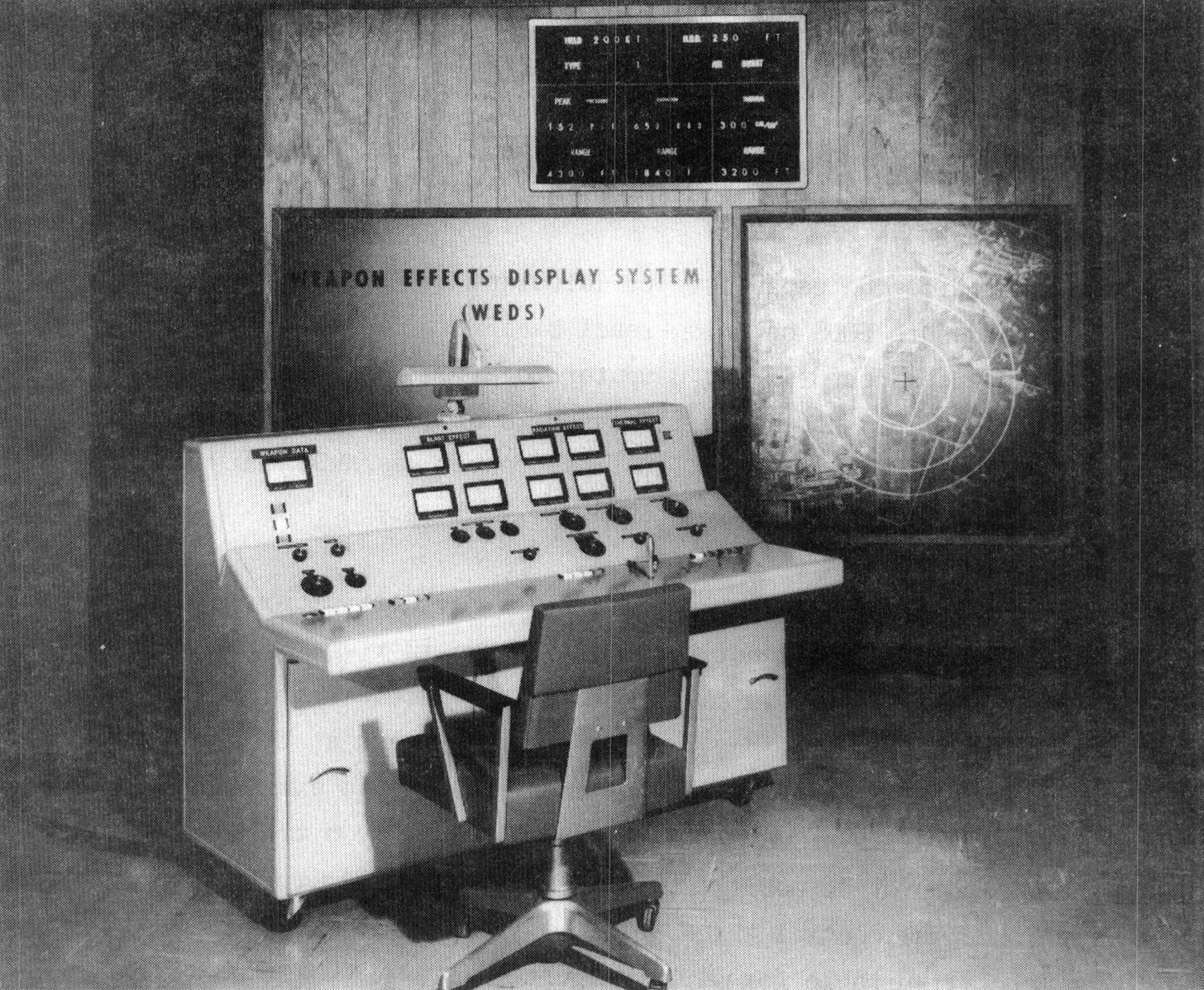
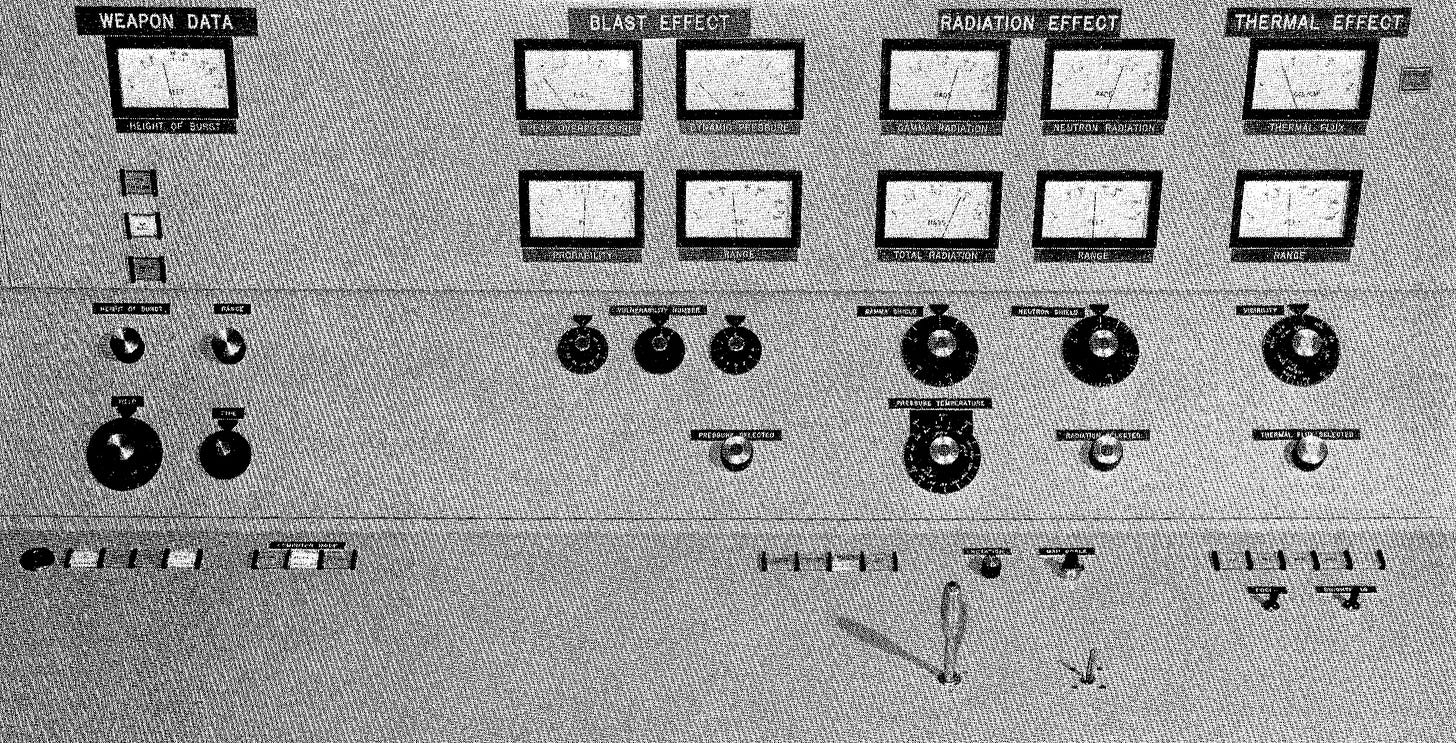
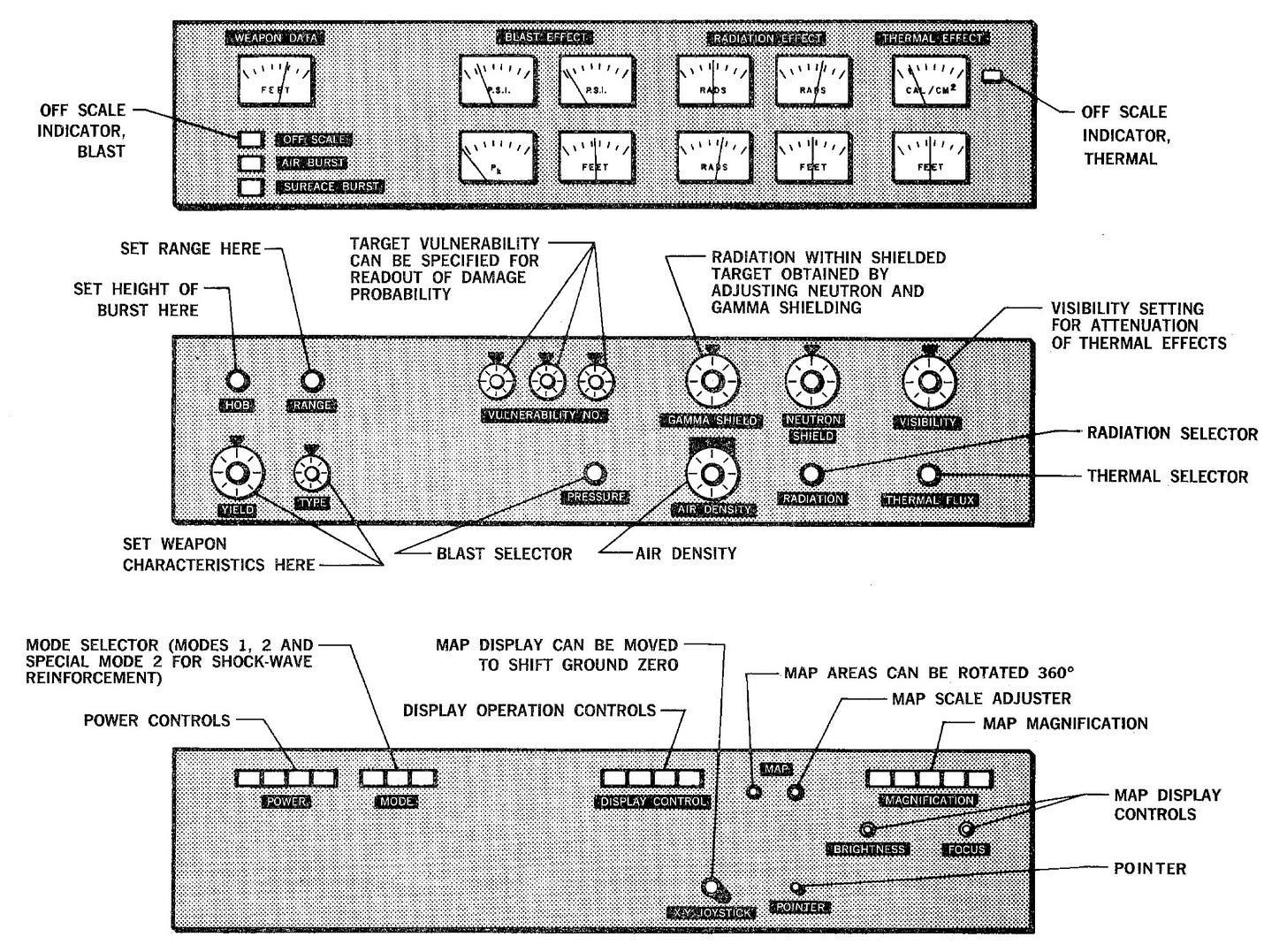

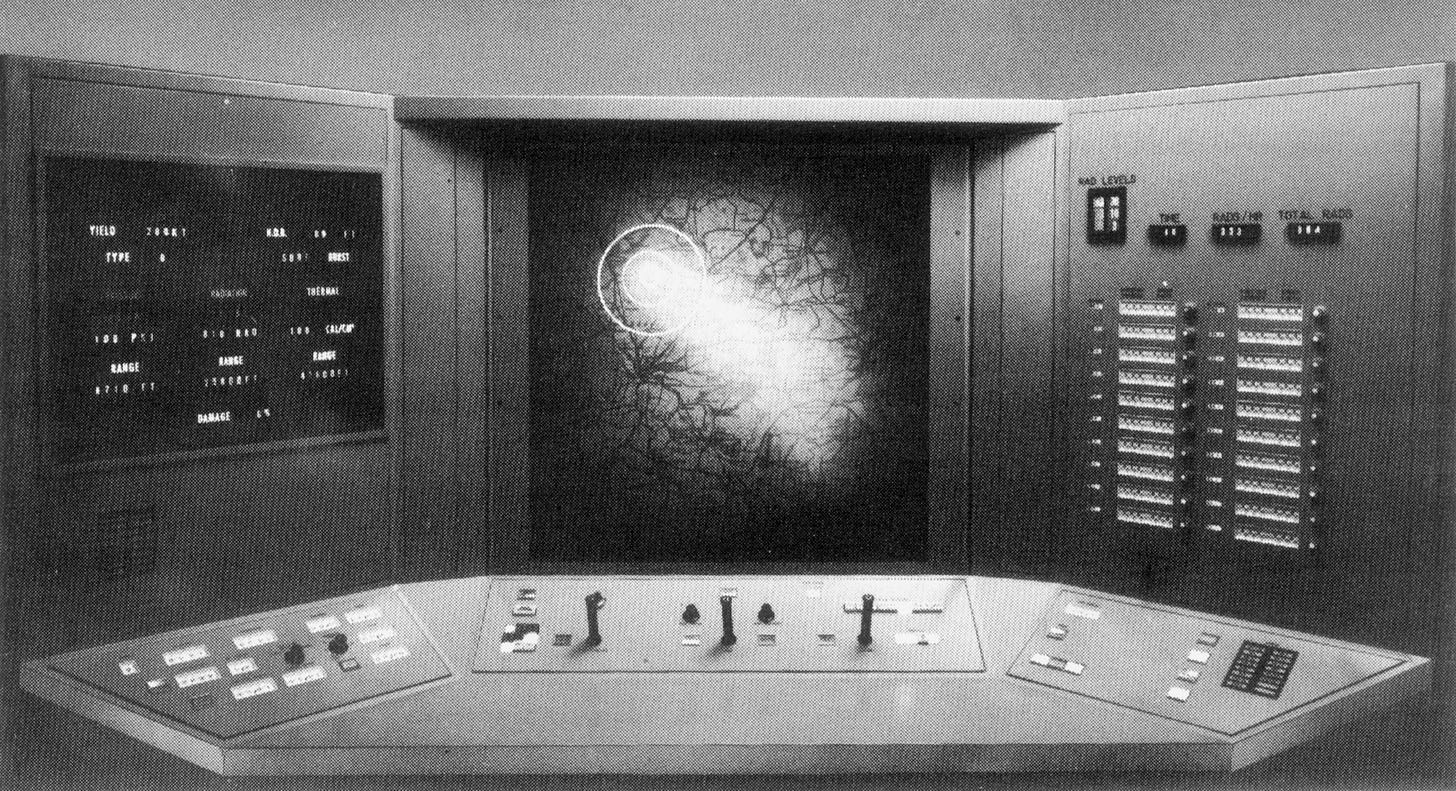

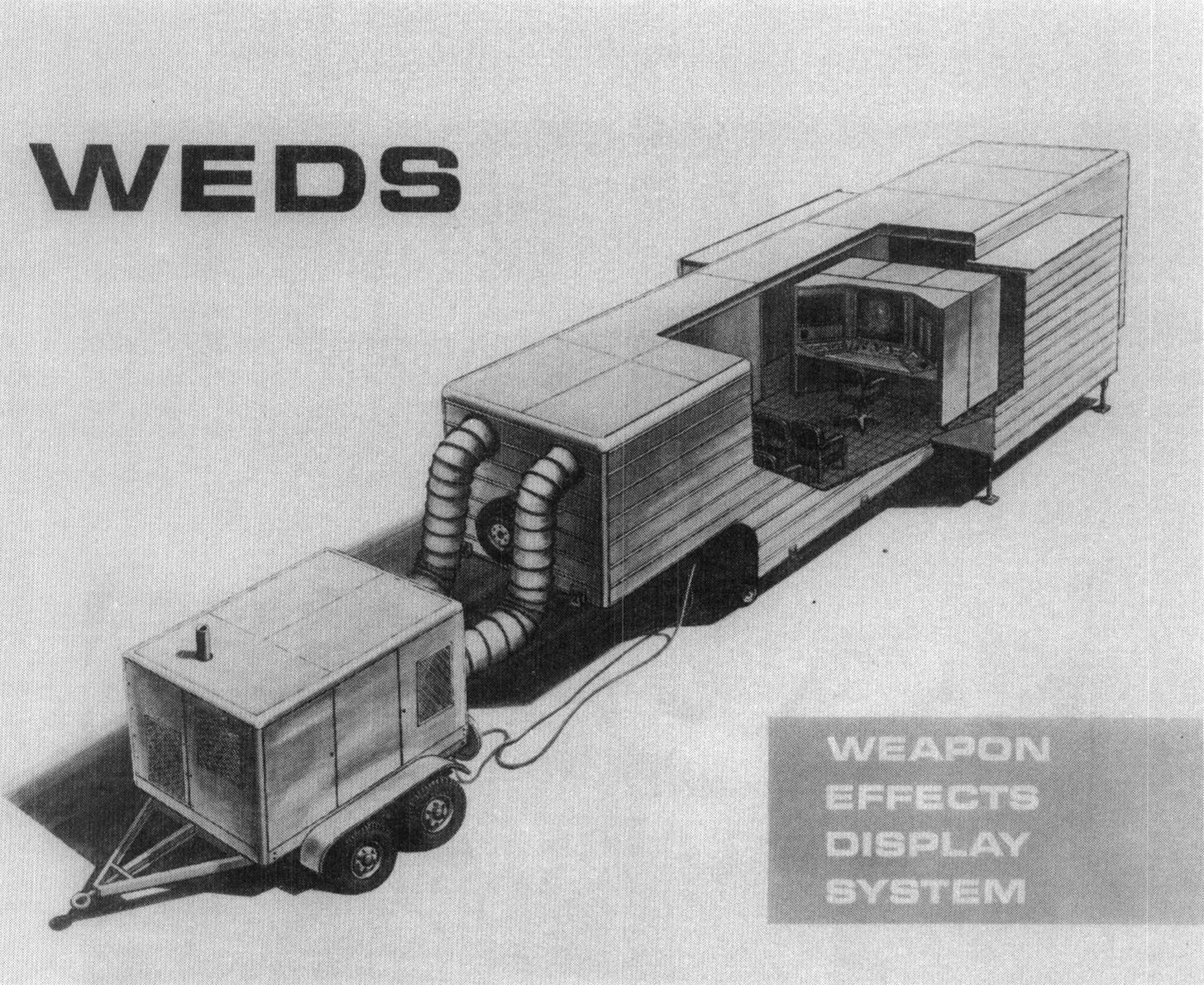
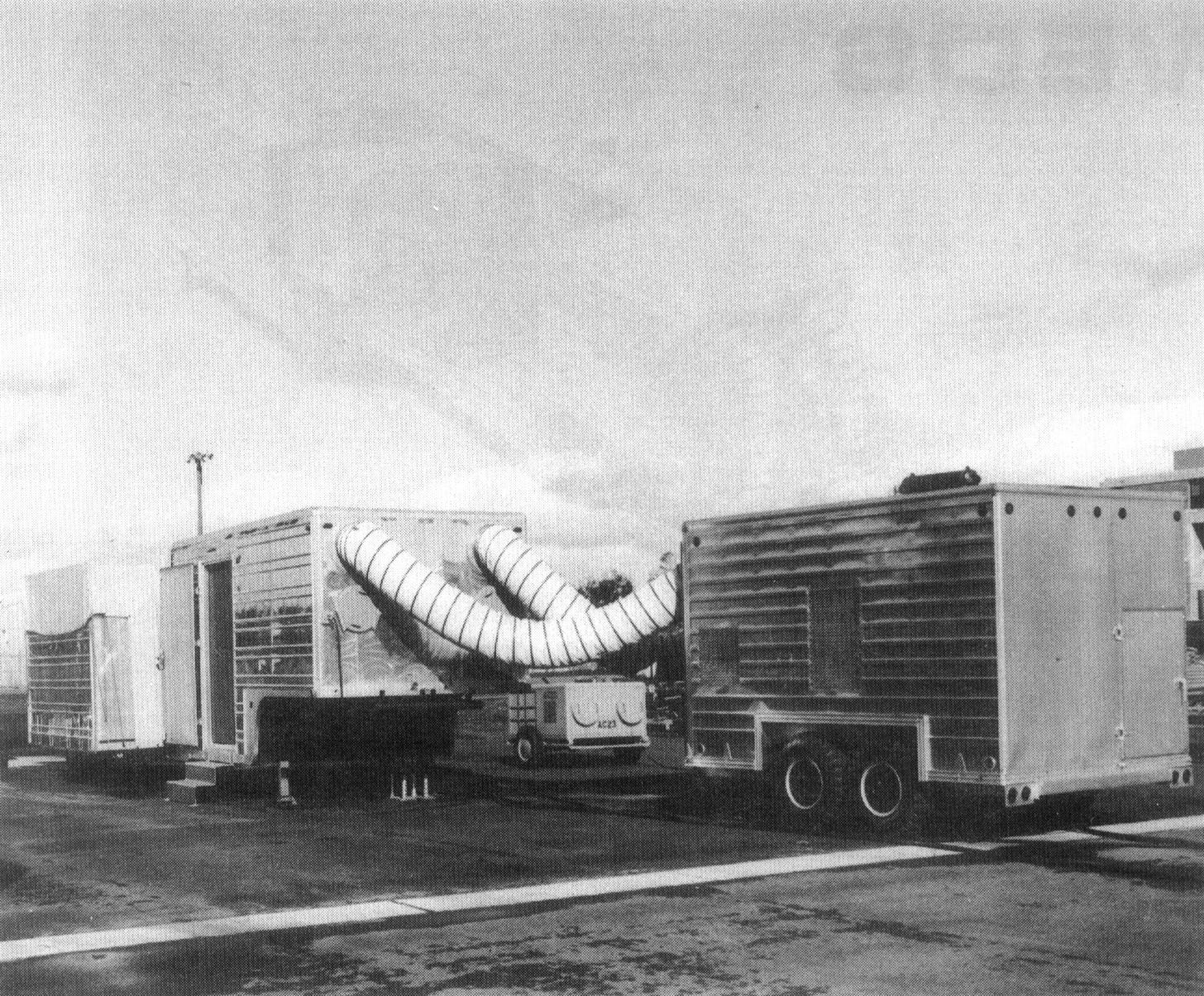
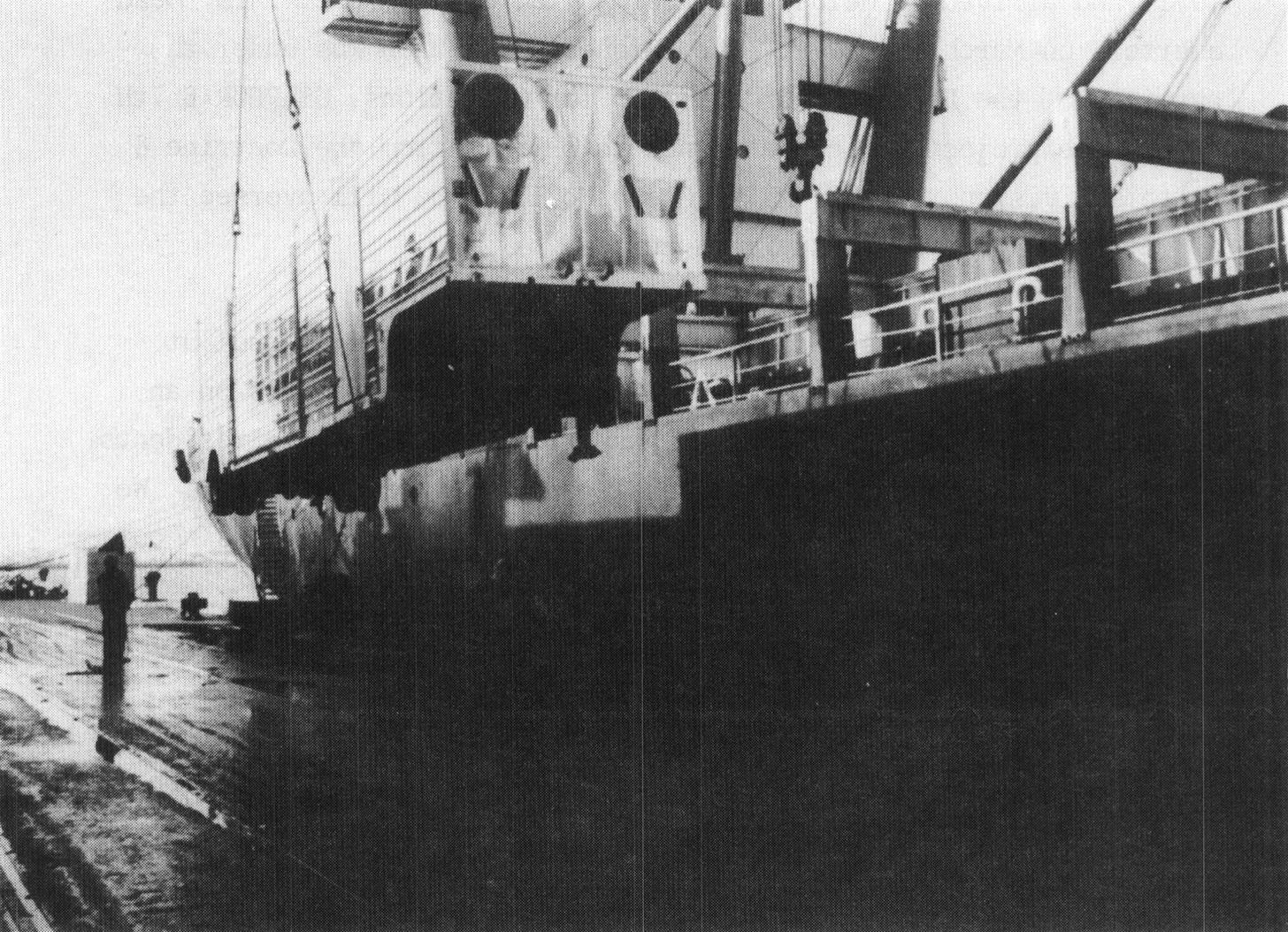

"In a given situation, the inability to rapidly assess nuclear weapon effects in advance might very well prevent their use altogether."
...oh, so that's what this was all about.
For some reason I kept imagining the system was supposed to be used for civil defence and such, maybe mapping the affected areas in the immediate aftermath of attack. Should've known they wouldn't have spent so much money unless it was for killing people.
In retrospect this project seems a bit silly. HOWEVER, a national research lab should be doing this type of activity. They could have written lots of speculative papers and expounded endlessly on what they thought they could do ... but actually building a prototype that provided far more value. It forced them to find where the actual bleeding edge of technology was at that point in time. It got rid of all the speculation and extrapolation. It forced people to realize what was actually possible.
We have a similar problem today ... everything is designed on CAD and the operation is simulated. Both of those computer programs have simplifying assumptions buried in their code and the users have no idea that they exist. Hence big rockets that operate perfectly in their simulation but scatter themselves in tiny bits across the Caribbean. It would be more reassuring if a bit more testing of individual components was done, to assure they work, before throwing them into the air above everyone's head.
Hmmmm ... and to think Livermore was doing this while I was in highschool. Keep up the good work !!